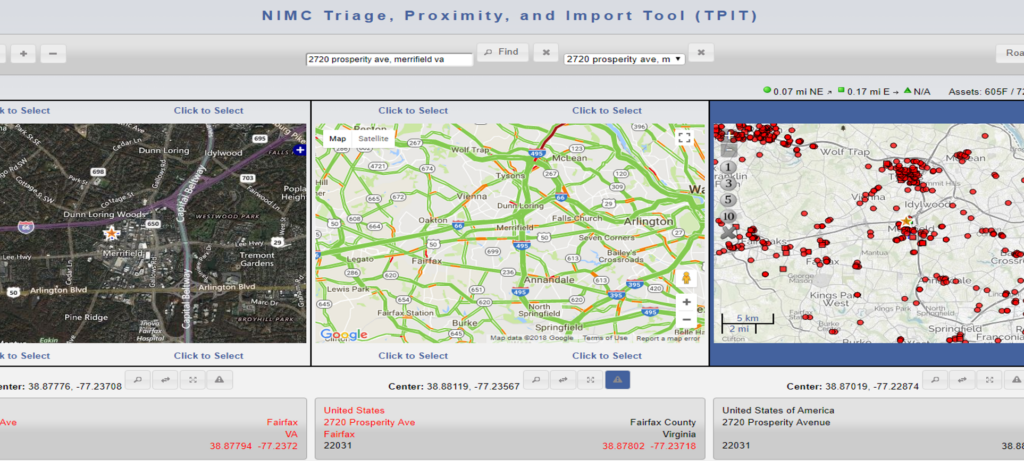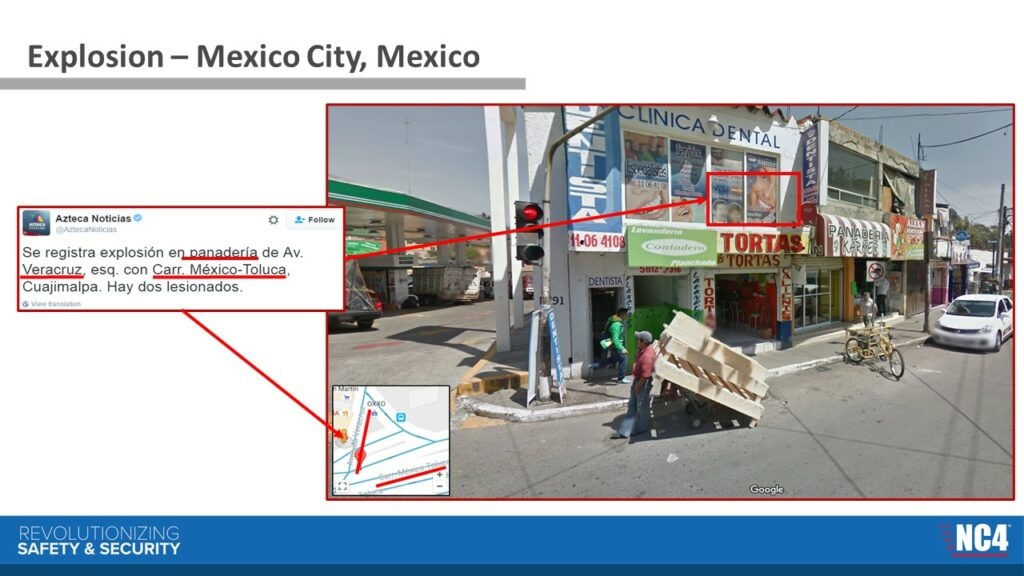Every enterprise has a unique risk profile based on a range of factors including geographic disposition, sector, scope of security and resiliency plans, organizational size and structure, supply chain, and much more. Without the right customized tools tailored for your organization in place, it’s challenging to stay ahead of threats and disruptions to your people, places, operations, and digital systems.
To create a resilient organization, robust risk intelligence and situational awareness are essential in managing and mitigating the impact of critical events. The entire Critical Event Management (CEM) process starts with risk intelligence.
What is risk intelligence?
Risk intelligence emerges from a systematic process wherein raw data is collected, analyzed, assessed, and transformed into relevant and reliable knowledge. This knowledge enables decision-makers and operators to take action for the benefit of their organization.
Comprehensive hyper-local risk intelligence is crucial as it empowers your organization with a common operating picture displaying all reported risk events while only alerting you to relevant risks impacting your company, people, and assets.

At Everbridge, risk intelligence comes from a combination of thousands of trustworthy data sources and the work of a team of experienced analysts. The data sources provide a layered, contextual perspective for our expert analysts, who work in the RIMC (Risk Intelligence Monitoring Center) around the clock. Together, they work to identify incidents that may impact your company, your employees, and your assets.
A multi-tier filter process eliminates ‘noise’ and narrows down the number of source-based reports for analysts to review manually. Analysts and systems discard unrelated or less informative reports, allowing priority reports to pass through. Then, our team of analysts, with the help of some automated and semi-automated processes, manually evaluate the timeliness, accuracy, and location of each incident report. A robust set of reporting guidelines and tools assist analysts in helping to decide whether the incident should be reported to you. If so, you’ll receive an alert.
Current and emerging risk landscape calls for risk intelligence
The world is currently in a time of flux, with organizations around the globe scrambling to find solutions to a range of complex and evolving risks. In 2022, organizations can expect increased cyber risk, security threats, instances of terror, and operational stress. For many businesses, this increasingly volatile risk landscape means fending for themselves in a world of increased governance, social unrest, and political instability is the only way to survive.
Despite the increase of risk projected for 2022, one in four businesses do not yet have the proper risk strategies in place to combat the emerging threat landscape. In other words, with recent experiences from crises such as the COVID-19 pandemic underpinning an overall lack of risk resilience across the globe: Reforming what we know about risk resilience and management is essential for organizations looking to survive and thrive beyond 2022. In previous years, a lack of cohesion around mitigation measures and contingency plans may have slowed an organization’s response to risk without any terminal effects. Today, a failure to adapt to the current risk landscape and improve risk resilience through improved technology and resilience planning will pose lethal to organizations slow to adapt.
Risk intelligence is more than AI, and it’s not just social media monitoring
It’s essential to employ a hyper-local risk intelligence system powered by humans and Automated Intelligence (AI) to reap the most value for your organization. AI can only do so much. If an organization is only using AI, they may receive inaccurate and imprecise reporting, unreported events, and no path to robust integrations.
To that end, keep in mind that speed needs to balance with quality. It’s better to give our team a little time to process the information so that you get more accurate, actionable information than a barrage of possibly meaningless alerts. Because of the error rate for AI-only-based risk intelligence, alert fatigue can easily set in. Do you want to make a knee-jerk decision based on a tweet? Probably not.
If there are, on average, 42,000 risk events per month, one can assume 10% of these events are incorrect/concerning due to inaccurate geocoding, misinformation/disinformation, or simple non-actionability. In some situations, the number of incidents to disregard can be as significant as the ones to pay attention to.
“Hyper local” means “Hyper relevant”
By leveraging Everbridge’s risk monitoring intelligence solution, you can capture (and adjust) your notifications based on your risk tolerance and the nexus of incident severity and proximity to identified assets. You’ll also receive situation reports, special event briefings, and custom reports tailored to the business impact alerts may have on your organization or location.
Setting up your risk intelligence profile with Everbridge is simple:
- Determine the risk categories that may impact your organization
- Identify the assets you want to monitor
Then:
- Get alerted with actionable intelligence on hyper-local and locally global events, small or large, with the potential to impact your organization
The importance of hyperlocal reporting for CEM
Everbridge can capture and convey risk events that present localized disruptions – sometimes only a few city blocks, such as water main breaks, one-alarm fires, suspicious packages. In a major metropolitan area like Manhattan, Tokyo, or Paris, an operator typically doesn’t need to know if that event occurred more than 10 blocks away from an asset. Solutions that drop the event in the city center or a general neighborhood are not generating an actionable or relevant feed. Instead, they create noise and work for your team, who need to determine if this event may impact your organization.
The accurate and precise geolocation of a critical event is the lynchpin of Everbridge’s Critical Event Management Platform. The location an analyst chooses ultimately impacts which Everbridge customers get notifications. Analysts are supplemented by process-driven technological solutions and take great care in assessing, selecting, and conveying a critical event’s impact area to your organization.
It is helpful to know that a disruptive event is occurring in Paris, but much more so to know it is unfolding in the 11th Arrondissement, or better yet, to know that it is on Boulevard Voltaire, between Cite de Phalsbourg and Rue de Belfort: Especially if your operations are in the area, or perhaps more so if you have no interest in activity going on in that neighborhood.

How hard can it be? Only a fraction of social media signals contain precise geolocation data. Teasing out the exact location of an event can be challenging. Most solutions relying on AI or algorithm solutions rely on heuristics and best guesses that frequently place the event blocks if not miles from where the event occurred.
Our team uses a variety of tools and techniques to geo-orient the signal. With a simple and sophisticated automated process, our tools evaluate a given signal’s metadata to assess how three distinct gazetteer/mapping services place the event.

If all three services are in concert, we double-check the text of the signal to ensure the information in the text comports with the identified location and we move on to the next step in our validation process.
If there is no uniform consensus, our analysts dig deeper into the source material to identify landmarks, street names, addresses, business names, or any other indicator that may help pinpoint the location.



In each of these instances, it is unlikely that systems relying solely on algorithms would be able to precisely and accurately place these risk events leaving operators and decision-makers with more work to do.
Everbridge monitors activities around the globe, wherever your company operates and wherever your people are. Let us help you identify threats that have the potential to become critical events that disrupt normal business operations and put your people at risk.

